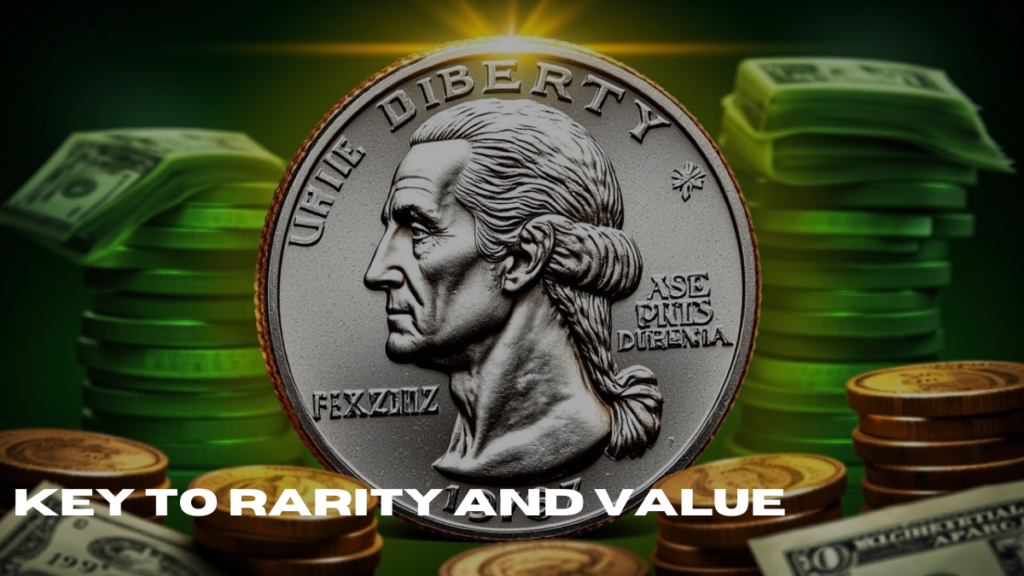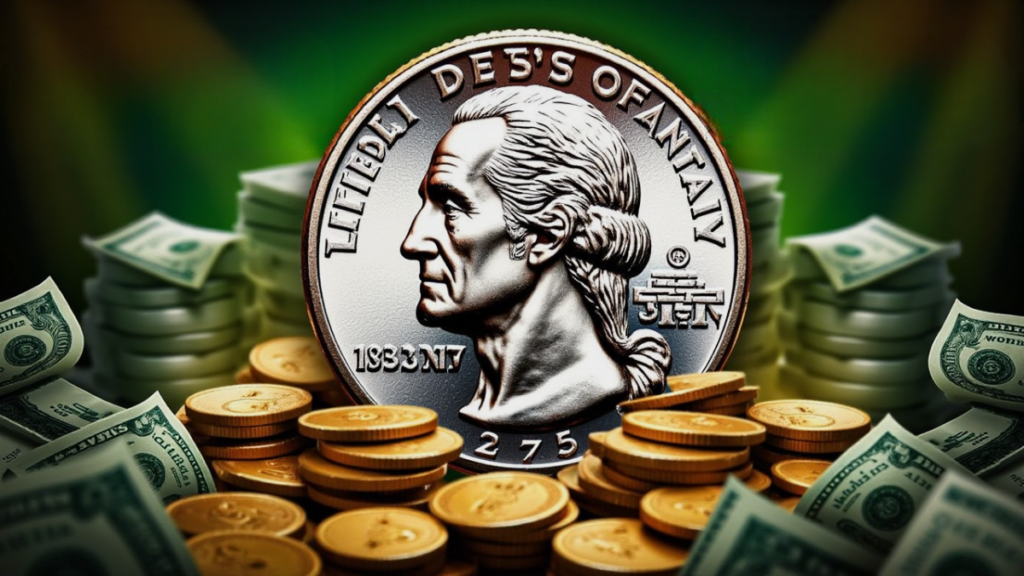The United States’ Bicentennial celebration in 1976 was a momentous occasion, marking the 200th anniversary of the Declaration of Independence. As part of the celebrations, the U.S. Mint released a series of coins to commemorate this historic event, including a special Bicentennial Quarter. While most of these coins were minted in huge quantities and are still widely available today, a few rare variants have captured the attention of coin collectors and are worth far more than their face value. In fact, one such rare Bicentennial Quarter recently sold for an astonishing $201,000!
1. Minting Errors: A Key to Rarity and Value

One of the most important factors that can make a coin valuable is a minting error. Coins with mistakes during their production are often much rarer than their properly minted counterparts, which can significantly increase their worth. The Bicentennial Quarter, like many other coins, was produced in high numbers in 1976, but a few of them contain errors that make them stand out.
Common minting errors in coins include double dies, missing mintmarks, and off-center strikes. Double dies occur when a coin is struck more than once, resulting in overlapping or blurry images. This type of error can make a coin appear more “bold” or “thick,” and collectors often seek out these unique specimens.
A missing mintmark error is another valuable variant of the Bicentennial Quarter. Normally, quarters minted at the Denver Mint would feature a “D” mintmark, while those minted at the Philadelphia Mint would be marked with a “P” mintmark. However, a small number of Bicentennial Quarters from the Philadelphia Mint were mistakenly released without a mintmark. These rare, “no mintmark” quarters are highly sought after by collectors and can command high prices, especially in excellent condition.
2. Grade and Condition: The Importance of Preservation
In the world of coin collecting, the condition or grade of a coin plays a crucial role in determining its value. Coins are graded on a scale from “Poor” to “Mint State,” with higher grades commanding much higher prices. Coins that are well-preserved and show little to no signs of wear and tear are considered more valuable.
For example, a Bicentennial Quarter that has been preserved in near-perfect condition—free from scratches, dents, or discoloration—will fetch a much higher price than a coin that has been heavily circulated and shows signs of wear. The graded coin scale ranges from “MS-60” (which represents a coin in relatively good condition) to “MS-70” (which represents a coin in perfect, flawless condition).
The highest quality of the 1976 Bicentennial Quarters are those rated MS-67 or higher, and it is these rare coins that tend to fetch the highest prices at auction. When a quarter is in pristine condition, it’s a collector’s dream, as these coins are not only rare, but they also reflect the beauty and craftsmanship of the U.S. Mint.
3. Proof Versions: Special Coins with Higher Value

In addition to the standard circulation coins, the U.S. Mint also produced special proof coins for collectors. These proof versions were struck using a different process that produced a sharper, more detailed image and a mirror-like finish. Because proof coins were produced in smaller quantities and primarily sold to collectors, they are much rarer than regular circulation coins.
The Bicentennial Proof Quarter, made of 40% silver, is one such example of a coin that has increased in value over time due to its limited mintage and superior quality. These coins were released in special sets and were not circulated, meaning they have a higher likelihood of being in pristine condition.
Proof coins often have a much higher value than their regular counterparts because of their limited supply and better quality. In fact, collectors often seek proof coins for their sets, which adds to their demand and value in the market.
4. Demand and Collectibility: A Never-Ending Interest

Bicentennial Quarters are not just valuable due to their rarity or minting errors; they also hold a special place in American history. As part of the celebrations for the 200th anniversary of the nation’s independence, these coins have been cherished by both collectors and history enthusiasts. The Bicentennial Quarter was part of a special series that included the half dollar and dollar coin, and it features a unique design with a depiction of Independence Hall on the reverse side.
For many collectors, the Bicentennial Quarter represents a symbol of national pride, and this makes the coin even more desirable. Whether it’s the unique design, the historical significance, or the emotional connection to the U.S. bicentennial celebrations, these coins continue to attract attention.
The constant demand from collectors, both seasoned and novice, keeps the prices of rare Bicentennial Quarters high. Coins that have been well-preserved, or that contain minting errors, tend to hold their value over time. And as coin collectors continue to seek out rare and unique pieces to add to their collections, the value of these rare Bicentennial Quarters continues to rise.
5. Silver Content: A Hidden Value
While not all Bicentennial Quarters contain silver, some special proof versions were made of 40% silver. These silver quarters are worth more than the regular copper-nickel versions, as silver is a precious metal with inherent value. The silver content of the coin contributes to its worth, especially when the coin is in high demand.
Silver coins also tend to maintain their value better over time because the price of silver itself tends to increase. This makes the 40% silver Bicentennial Proof Quarter more valuable than its copper-nickel counterparts.
6. The $201K Quarter: A Real Example of Rarity

The reason why a particular Bicentennial Quarter recently sold for $201,000 comes down to the perfect storm of factors. The quarter in question was a 1976-S proof silver quarter that had been graded in perfect condition (PR-70) by the Numismatic Guaranty Corporation (NGC). This grade signifies that the coin was flawless, without any imperfections. In addition, the coin had been carefully preserved and was one of the few remaining in such remarkable condition.
While this particular coin was an extreme example, it shows how rare and valuable a coin can become when multiple factors—minting errors, perfect grade, silver content, and collector demand—align. Most Bicentennial Quarters will not fetch such a high price, but collectors looking for rare, high-grade specimens can expect to pay significantly more than face value for coins that have been well-preserved and meet certain criteria.
FAQs
Q.What makes the $201K Bicentennial Quarter so valuable?
A.The value comes from its perfect grade (PR-70), rare minting errors, and its 40% silver content, which makes it a unique collector’s item.
Q.What is the grade of the $201K Bicentennial Quarter?
A.The coin was graded PR-70 by the Numismatic Guaranty Corporation (NGC), indicating it is in perfect, flawless condition.
Q.Are all Bicentennial Quarters worth a lot?
A.No, most Bicentennial Quarters are worth only face value or a small premium. The rare ones with minting errors or high-grade conditions are the most valuable.
Q.What are the most common errors found in Bicentennial Quarters?
A.Common errors include missing mintmarks, double dies, and off-center strikes, which can increase a coin’s value significantly.


